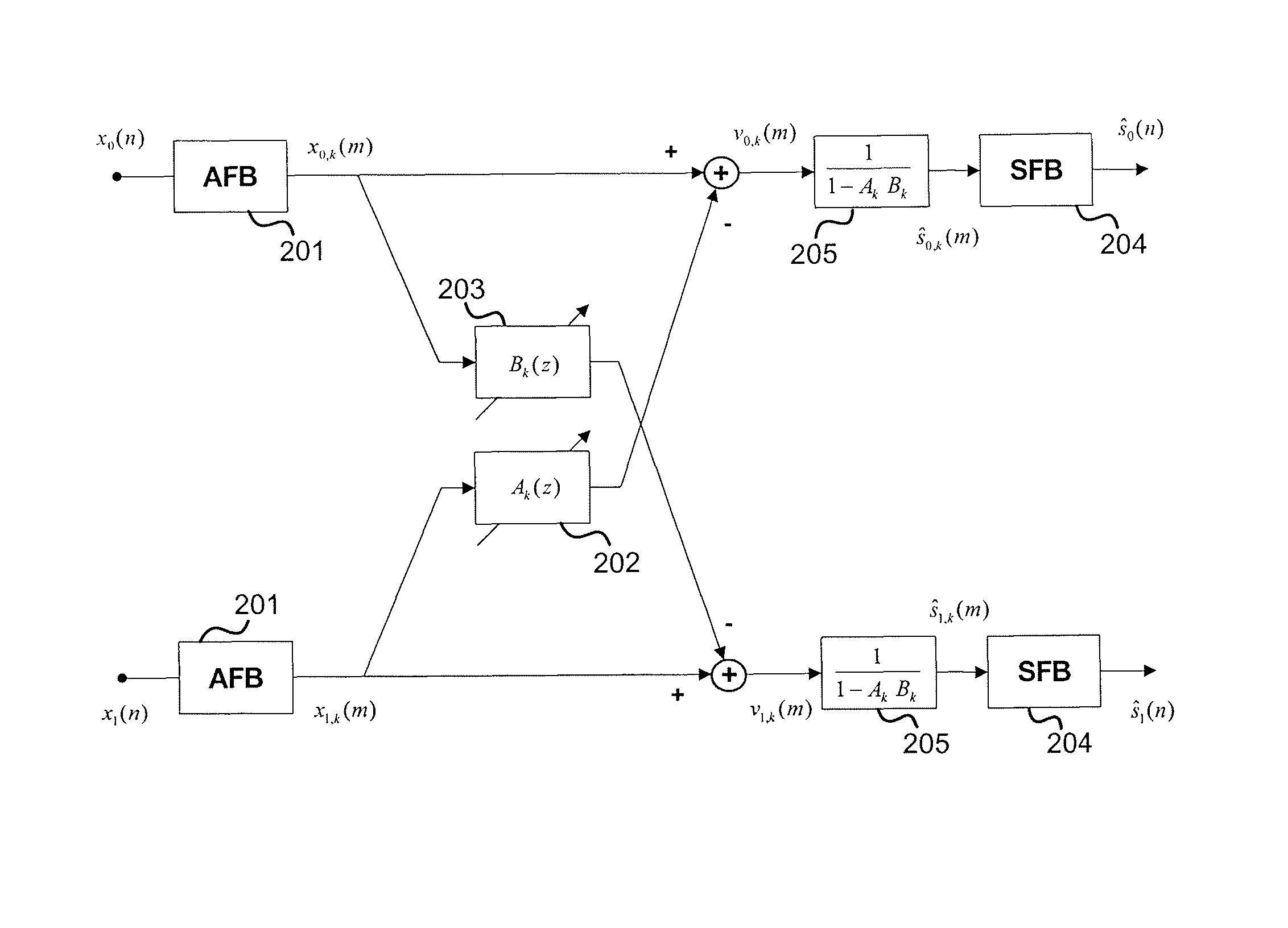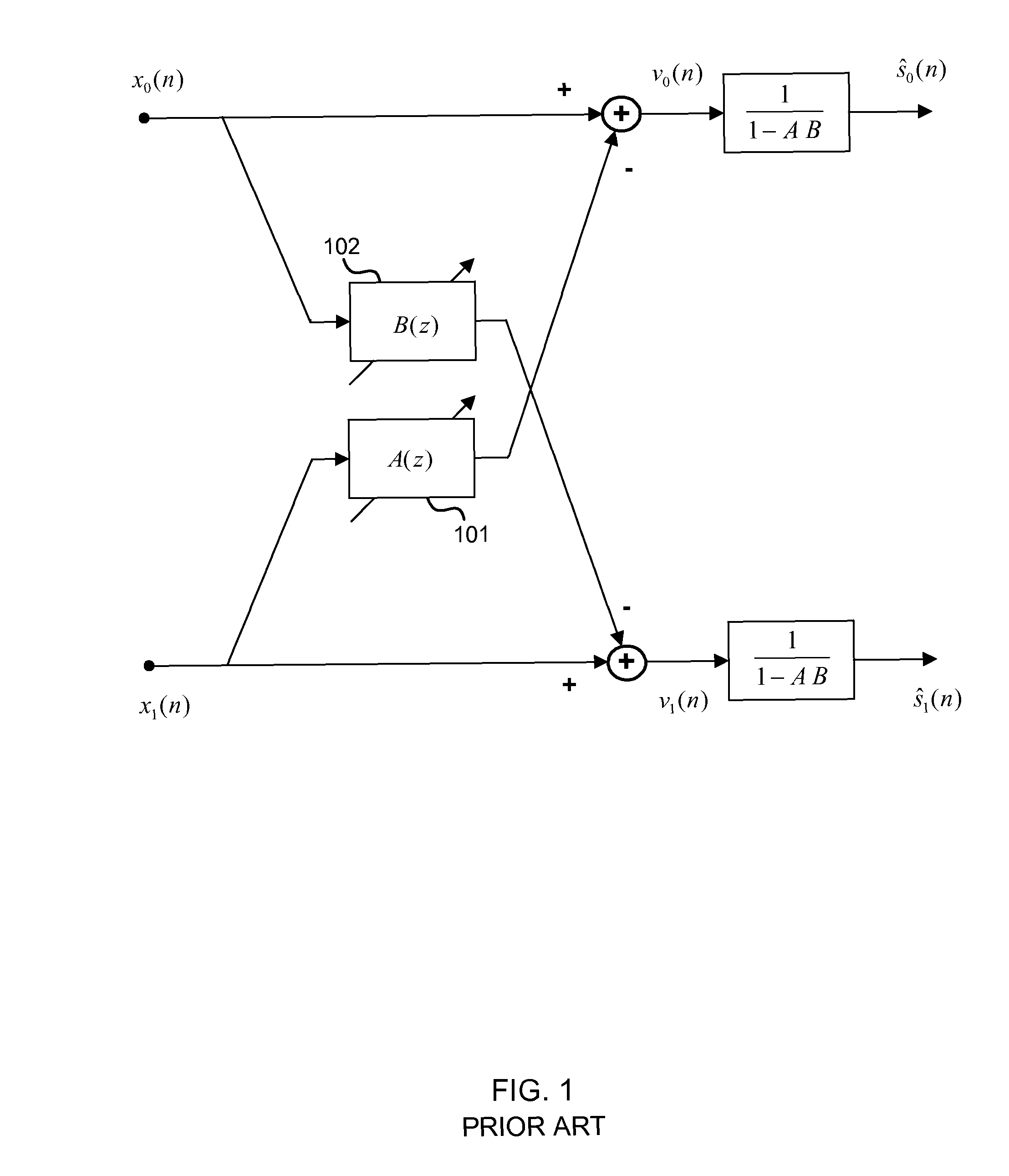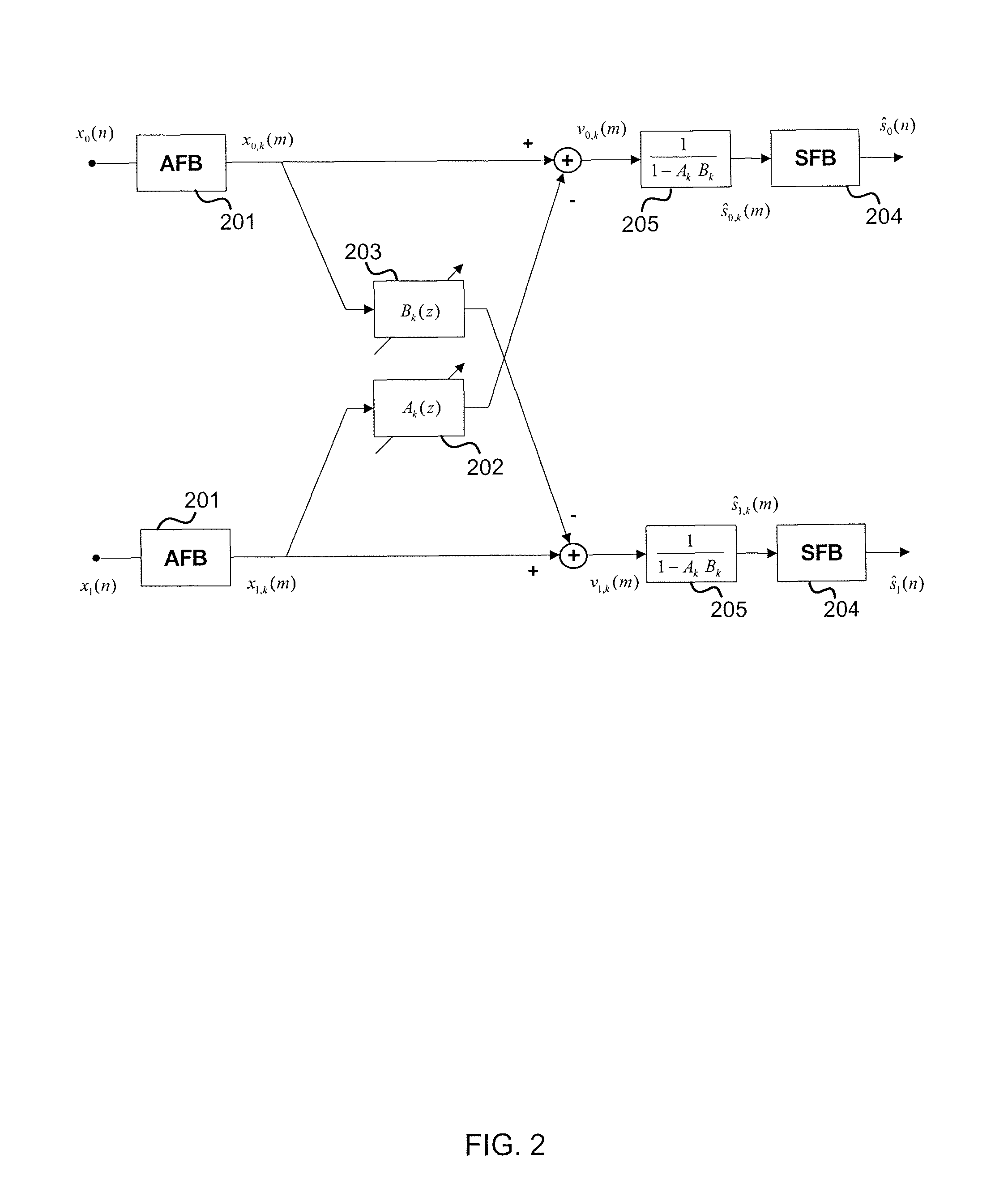Two microphone noise reduction system
a technology of noise reduction and two microphones, applied in the field of voice communication systems, can solve the problems of low efficiency of algorithms, computational intensive, and ineffective work of traditional single-microphone nr algorithms in these environments
- Summary
- Abstract
- Description
- Claims
- Application Information
AI Technical Summary
Benefits of technology
Problems solved by technology
Method used
Image
Examples
Embodiment Construction
[0023]A two microphone noise reduction system is described. In an embodiment, input signals from each of the microphones are divided into subbands and each subband is then filtered independently to separate noise and desired signals and to suppress non-stationary and stationary noise. Filtering methods used include adaptive decorrelation filtering. A post-processing module using adaptive noise cancellation like filtering algorithms may be used to further suppress stationary and non-stationary noise in the output signals from the adaptive decorrelation filtering and a single microphone noise reduction algorithm may be used to further optimize the stationary noise reduction performance of the system.
[0024]A first aspect provides a method of noise reduction comprising: decomposing each of a first and a second input signal into a plurality of subbands, the first and second input signals being received by two closely spaced microphones; applying at least one filter independently in each ...
PUM
 Login to View More
Login to View More Abstract
Description
Claims
Application Information
 Login to View More
Login to View More - R&D
- Intellectual Property
- Life Sciences
- Materials
- Tech Scout
- Unparalleled Data Quality
- Higher Quality Content
- 60% Fewer Hallucinations
Browse by: Latest US Patents, China's latest patents, Technical Efficacy Thesaurus, Application Domain, Technology Topic, Popular Technical Reports.
© 2025 PatSnap. All rights reserved.Legal|Privacy policy|Modern Slavery Act Transparency Statement|Sitemap|About US| Contact US: help@patsnap.com



